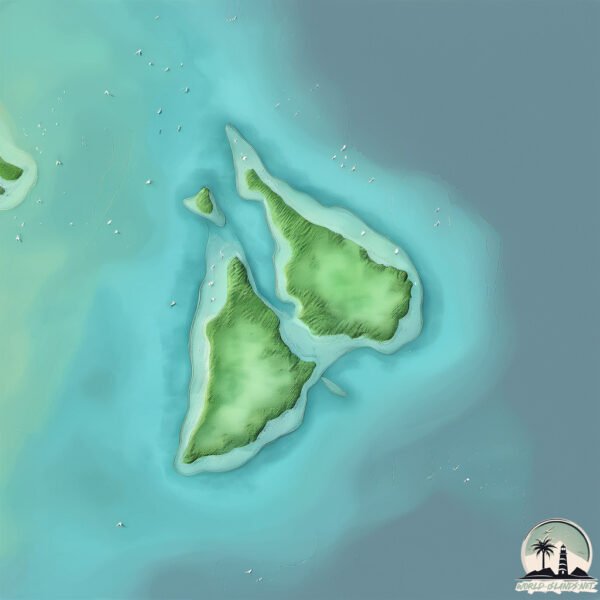Rongui

Welcome to Rongui, a Tropical island in the Mozambique Channel, part of the majestic Indian Ocean. This guide offers a comprehensive overview of what makes Rongui unique – from its geography and climate to its population, infrastructure, and beyond. Dive into the details:
- Geography and Size: Explore the island’s size and location.
- Climate and Weather: Weather patterns and temperature.
- Topography and Nature: Uncover the natural wonders of the island.
- Infrastructure and Travelling: Insights on reaching, staying, and making the most of your visit.
- News and Headlines: Latest News.
Geography and size of Rongui
Size: 14.6 km²
Coastline: 26.5 km
Ocean: Indian Ocean
Sea: Mozambique Channel
Continent: Africa
Rongui is a Medium Island spanning 15 km² with a coastline of 26 km.
Archipel: –
Tectonic Plate: Australia – A major tectonic plate covering Australia, New Zealand, and parts of the Indian and Pacific Oceans, known for its relative stability and occasional seismic activity.
The geographic heart of the island is pinpointed at these coordinates:
Latitude: -10.85401173 / Longitude: 40.66120475
Climate and weather of Rongui
Climate Zone: Tropical
Climate Details: Tropical Savanna, Wet
Temperature: Hot
Climate Characteristics: Defined by distinct wet and dry seasons with high temperatures year-round. Pronounced rainfall occurs during the wet season, while the dry season is marked by drought.
Topography and nature of Rongui
Timezone: UTC+02:00
Timezone places: Africa/Johannesburg
Max. Elevation: 13 m
Mean Elevation: 7 m
Vegetation: Evergreen Broadleaf Forest
Tree Coverage: 78%
The mean elevation is 7 m. The highest elevation on the island reaches approximately 13 meters above sea level. The island is characterized by Plains: Flat, low-lying lands characterized by a maximum elevation of up to 200 meters. On islands, plains are typically coastal lowlands or central flat areas.
Dominating Vegetation: Evergreen Broadleaf Forest
Characterized by dense, lush canopies of broadleaf trees that retain their leaves year-round. These forests are typically found in tropical and subtropical regions and are known for their high biodiversity. Rongui has a tree cover of 78 %.
Vegetation: 7 vegetation zones – Very Highly Diverse Island
Islands in this range are ecological powerhouses, showcasing a wide array of vegetation zones. Each zone, from lush rainforests to arid scrublands, coastal mangroves to mountainous regions, contributes to a complex and interdependent ecosystem. These islands are often hotspots of biodiversity, supporting numerous species and intricate ecological processes.
Infrastructure and Travelling to Rongui
Does the island have a public airport? no.
There is no public and scheduled airport on Rongui. The nearest airport is Mtwara Airport, located 75 km away.
Does the island have a major port? no.
There are no major ports on Rongui. The closest major port is MTWARA, approximately 80 km away.
The mean population of Rongui is 35 per km². Rongui is Gently Populated. The island belongs to Comoros.
Continuing your journey, Vamizi is the next notable island, situated merely km away.
Vamizi Island/ Africa (Mozambique)



Comoros is classified as Least developed region: Countries that exhibit the lowest indicators of socioeconomic development, with the lowest Human Development Index ratings. The level of income is Low income.
News – Latest Updates and Headlines from Rongui
Stay informed with the most recent news and important headlines from Rongui. Here’s a roundup of the latest developments.
- Feed has no items.
Please note: The data used here has been primarily extracted from satellite readings. Deviations from exact values may occur, particularly regarding the height of elevations and population density. Land area and coastline measurements refer to average values at mean high tide.
